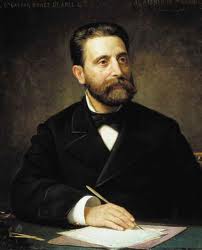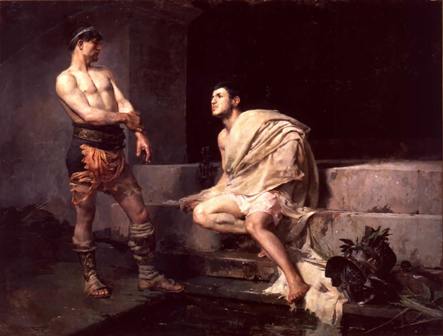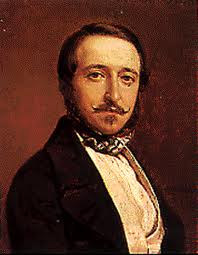Realism poetry: Gaspar Núñez de Arce & Ramón Campoamor
Although it is clear that prose goes through some great changes during the transition from Romanticism to Realism, poetry and theatre remain more or less the same as during the first half of the 19th century, still deeply entwined with the Romanticist tradition. This relationship continued up until the end of the century.
Poetry of the Spanish Realism and Naturalism

This late Romanticism is more apparent than real, without the lyrical exaltation of the first Romantics and often with no intention or feeling behind the rhetoric. This was caused by the society of the time: the bourgeoisie weren't far from the Restoration of 1975, they were setting the foundation for capitalism and taking the first steps towards industrialization in Spain. This didn't leave any place for those who admired art in a selfless way.
The two most characteristic Spanish authors of the Realist poetry movement in Spain were Gaspar Núñez de Arce and Ramón de Campoamor.
Gaspar Núñez de Arce - Life and Works
Gaspar Núñez de Arce was born in Valladolid in 1834. His father had an ecclesiastical career in mind for him, but Gaspar fled to Madrid instead. There he worked for several newspapers and during a year worked as a chronicler in the Hispano-Moroccan War. This would mark the beginning of his growing interest in politics. Following this, he had several political roles in Sagasta's party and came to be Governor of Barcelona in 1868.

In 1872 he wrote "El Haz de Leña", his best historical drama. But Gaspar had a real knack for poetry which he didn't really have for most of the other genres. His most famous poetic work is "Gritos del Combate", with poems like "La duda", "A Darwin", "A Voltaire"...
Gaspar's theoretical works let us know he was well aware of the role of writers during this period. His work is broad and diverse, and shows his pessimism and pain in seeing the destruction and chaos in the world. He was a great artist with the verses of his works, and was totally obsessed with their form, so much so that he rejected any type of quick inspiration. His style is simple, without any rhetoric, which he thinks is ridiculous; however, he stresses the importance of rhythm.
Ramón de Campoamor - Life and Works
Ramón de Campoamor was born in Asturias in 1817. He spent several years studying philosophy in Santiago de Compostela, logic and maths in Madrid and ecclesiastical studies in the Compañía de Jesús. He didn't have any religious vocation, so he went on to study medicine, also in Madrid, but one of his professors recommended him to study humanities and literature, and so he eventually turned to journalism. He befriended Espronceda, who became his mentor, and wrote his first poem in 1837. From this year until 1856 he worked for several newspapers.

In 1838, when he was just 20 years old, he published his first work, "Una mujer generosa" (A generous woman) a two act comedy which was never performed on stage. Some other of his dramatic works are "El Castillo de Santa María", "La fineza del querer" or "El hijo de todos". In 1870 he wrote "Guerra a la guerra" (War to war), which is considered to be his best work. In the 1880s Campoamor stopped writing plays and began to write monologues instead, such as "Cómo rezan las solteras" and "El amor o la muerte".
His career as a poet started in 1838, and his first Romantic verses were published in "Ternezas y Flores". However by the time he came to publish his second book of poems, "Ayes del alma", his style is already far from that of the Romantics. Campoamor is famous for creating his own genres such as doloras, small poems, and humoradas. Philosophy, which was perhaps his true calling, was present throughout all of his work, and caused many controversial discussions. He also had a light political career, pursuing his monarchic and conservative ideals. He married Guillermina O'Gorman, as young lady from a rich Irish family who gave them a lot of their family money. From 1850 to around 1861, he took different political positions, and he died in Madrid in 1901, when he was 83 years old.

